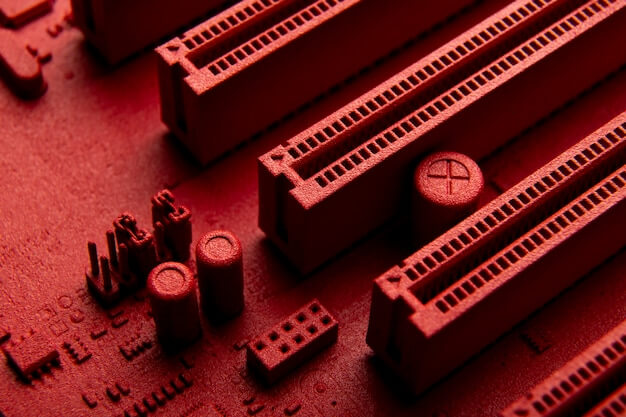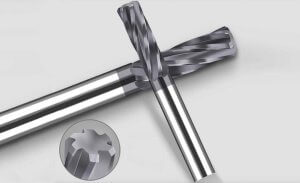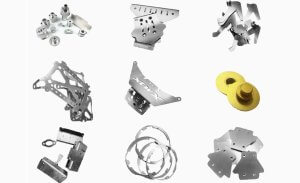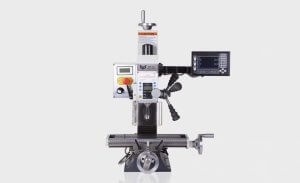The Importance and Role of CNC Machining in Manufacturing
CNC (Computer Numerical Control) machining is a critical element within modern manufacturing. As an advanced technology, it precisely automates the machinery processes, ranging from milling to lathing, through pre-programmed computer software. This accuracy significantly reduces errors, optimizes resource use, and ultimately improves productivity. Practical examples demonstrate its necessity in industries where precision and efficiency are imperative such as aerospace engineering or medical device production. A deviation by even a millimeter can lead to catastrophic results in these sectors, reinforcing why consistency that CNC machining provides is pivotal.
Understanding Material Density in CNC Machining
In the context of CNC machining, material density refers to the mass per unit volume of a given material. This attribute significantly impacts both costs and efficiency in the machining process. Materials with high density are inherently more challenging and time-consuming to machine than those with lower densities due to their increased resistance to cutting forces. Consequently, machining denser materials often result in higher operational costs.
The range of materials used in CNC machining is extensive, each showcasing varying degrees of density. Some common examples comprise:
- Aluminum: Light-weight and easy to machine, it’s an optimal choice for many manufacturers.
- Steel: A dense metal alloy known for its strength and durability but requires specific tooling and can incur excess wear on equipment over time.
- Plastics (such as ABS or Delrin): They have low density, making them relatively easier and cost-effective to machine.
- Titanium: Although praised for its light weight and great strength, its high density makes it significantly hard to machine thereby increasing manufacturing costs.
The Relationship between Material Density and CNC Machining Costs
The density of a material plays a significant role in CNC machining costs and efficiency. Here are some key points to consider:
Impact of Material Density on CNC Machining Costs:
- Tool Wear Rate: High-density materials tend to have a higher tool wear rate during machining. This can increase the frequency of tool replacements, leading to additional costs.
- Processing Time: Machining high-density materials often requires slower cutting speeds and feeds to maintain accuracy and surface finish. This can result in longer processing times, increasing overall machining costs.
- Machining Difficulty: High-density materials, such as certain metals, can be more challenging to machine due to their hardness and resistance to cutting. This may require specialized tools or techniques, adding to the complexity and cost of machining.
Considerations for Material Density in CNC Machining:
When selecting materials for CNC machining, it is important to consider the density and its impact on costs and efficiency. Some key considerations include:
- Material Selection: Choosing materials with lower density, such as aluminum or plastics, can help reduce machining costs as they are generally easier to machine and have lower tool wear rates.
- Design Optimization: Designing parts with consideration for material density can help minimize machining difficulties and reduce costs. Avoiding excessive material removal or intricate geometries can improve machining efficiency.
- Cost-Benefit Analysis: Conducting a cost-benefit analysis of different materials based on their density and machining characteristics can help identify the most cost-effective options for a specific project.
By understanding the relationship between material density and CNC machining costs, it is possible to make informed decisions in material selection and design optimization to achieve cost-efficient machining processes. To explore CNC machining services that offer expertise in material selection and cost optimization, you can visit our Precision Machining Service.
Efficiency and Material Density in CNC Machining
In Computer Numerical Control (CNC) machining, the density of the material being machined significantly impacts efficiency. As a central factor affecting tool wear rate and processing time, material density is crucial to proficient machining operations. High-density materials, such as stainless steel or titanium, accelerate tool degradation leading to more frequent replacements and diminished efficiency. These denser materials require longer processing times due to their resistance against cutting forces, further reducing operational effectiveness.
An illustrative industrial scenario involves the automotive sector where manufacturers often deal with high-density metals for engine components. In this context, prolonging the life-span of the tooling equipment while maintaining efficient production schedules becomes imperative. Therefore, careful consideration of material density alongside optimization strategies like using harder tools or adjusting operating parameters can contribute meaningfully to overall CNC machining efficiency.
Maximizing Cost-Efficiency in CNC Machining
In order to maximize cost-efficiency in CNC machining, especially with varying material densities, it is critical that manufacturers adopt strategic approaches. One strategy involves optimizing feed rates and cutting speeds based on the specific density of the material in use. For example, a higher feed rate might be more cost-effective for softer materials, while slower cutting speeds could potentially prolong tool life when working with denser materials.
Other plausible steps include:
- Maintaining machine health: Regular preventive maintenance can significantly reduce downtime and avoid costly repairs.
- Investing in quality tooling: High-quality tools may have higher upfront costs but they often last longer and perform better which leads to lower long-term expenses.
- Software optimization: Leveraging CAD/CAM software that allows adjustments considering material density can lead to precision and time-saving thus improving efficiency and reducing unnecessary wastage.
Each of these steps contributes towards effective utilization of resources, significant savings and ultimately an increase in overall productivity and profitability.
Other Articles You Might Enjoy
- Reducing Manufacturing Costs with Smart Material Choices in CNC Machining
Introduction to CNC Machining CNC machining stands for Computer Numerical Control machining, a cornerstone in modern manufacturing. This process uses computer-controlled machines to shape material into precise parts and components.…
- Maximizing Efficiency in CNC Machining: Material Specific Tooling and Techniques
Introduction to CNC Machining and its Efficiency Computer Numerical Control (CNC) machining is a manufacturing process that involves computer use for handling machine tools. The primary function of these machines…
- The Future of Medical Device Manufacturing: CNC Machined Stainless Steel
Introduction to Medical Device Manufacturing Medical device manufacturing is a crucial sector in the healthcare industry, powering a myriad of medical procedures and treatments worldwide. This field involves the design,…








